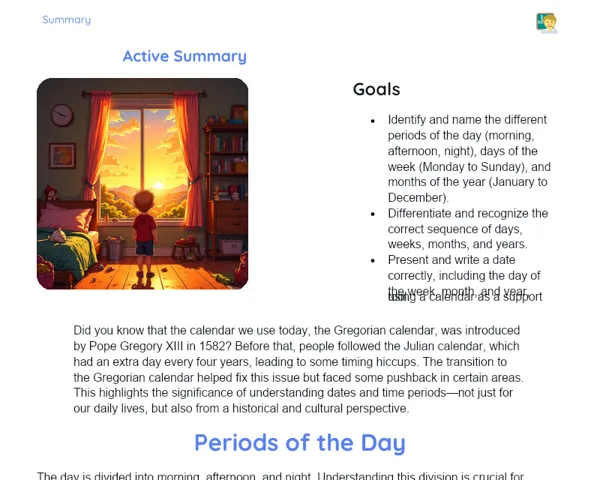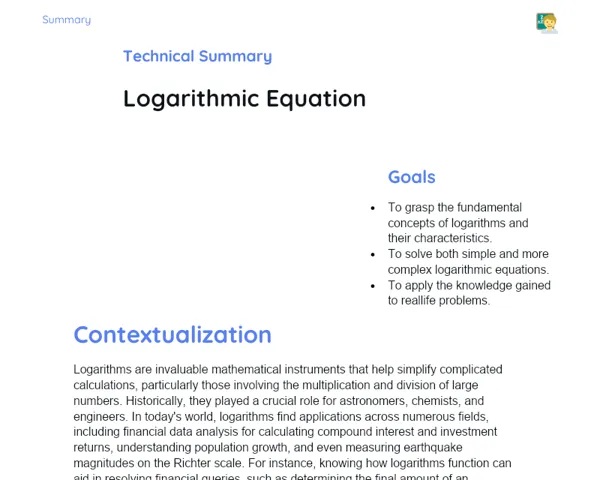Objectives
1. 🔎 Identify and describe the key characteristics of a parallelogram, including its opposite sides that are parallel and congruent, and opposite angles that are equal.
2. 📏 Develop your skills to calculate the measures of sides and angles in parallelograms, using specific formulas and geometric properties.
3. 🧩 Solve real-world and theoretical problems involving parallelograms, applying your knowledge in various contexts.
Contextualization
Did you know that parallelograms aren't just abstract shapes? They’re critical in many fields like design and architecture! Modern buildings and furniture often use parallelogram design elements to optimize space and create visually appealing patterns. Just think of the tiled floors, brick layouts, or even the intricate structures of bridges. Grasping the properties of parallelograms can unlock numerous practical applications that go far beyond a classroom setting, impacting our everyday lives.
Important Topics
Opposite Sides Parallel and Congruent
In a parallelogram, opposite sides run parallel to each other, meaning they’ll never cross, even if you extend them infinitely. Additionally, these sides are congruent, which means they’re the same length. This important property is crucial for defining a parallelogram and has various practical applications, especially in engineering where creating stable and symmetric structures is key.
-
The property of parallel opposite sides ensures the shape remains unchanged, no matter how you position it.
-
Congruent opposite sides are essential in design and construction where symmetry plays a vital role.
-
This property helps identify parallelograms in real-life situations - think about designing furniture or buildings.
Opposite Angles Equal
In a parallelogram, opposite angles are equal. For instance, if one angle at a corner is 40 degrees, the opposite angle will also measure 40 degrees. This property is key in geometry and has real-world applications in fields like navigation and design where precise angles make all the difference.
-
The equality of opposite angles helps us understand and predict symmetry in designs and structures.
-
This property is useful in mapping and navigation technologies for determining more accurate directions.
-
It's essential for solving equations that involve unknown angles in geometry and trigonometry.
Diagonals that Bisect
The diagonals of a parallelogram meet and bisect each other, meaning they cut each other in half. The point where the diagonals intersect is the midpoint of each diagonal. This property is useful in mathematics to prove theorems and is also crucial in engineering to ensure precision and stability in structures.
-
The intersection of the diagonals serves as a point of symmetry for the parallelogram.
-
This property can help us calculate areas and volumes in geometry, simplifying problem-solving.
-
In practice, it’s used in the design of wheels or other rotating parts that need to balance weight evenly.
Key Terms
-
Parallelogram: A four-sided shape with opposite sides that are both parallel and congruent.
-
Congruent: Two figures are considered congruent if they are identical in size and shape.
-
Bisector: A line or plane that divides an angle, segment, or figure into two equal halves.
For Reflection
-
How does having opposite sides that are parallel and congruent contribute to the stability of structures like bridges and buildings?
-
Why is it significant for the opposite angles in a parallelogram to be equal? How can this property be useful in daily life?
-
In what ways can the bisecting diagonals assist in calculating areas in more complex figures?
Important Conclusions
-
Today, we dived into the intriguing properties of parallelograms, noting that they feature opposite sides that are parallel and congruent, opposite angles that are equal, and diagonals that bisect each other.
-
We explored how these characteristics make parallelograms foundational in practical applications such as design, engineering, and navigation.
-
We acknowledged that understanding geometry is not just about academics; it’s a vital tool that affects many aspects of our everyday and professional lives.
To Exercise Knowledge
- Design Challenge: Create a floor pattern using only hand-drawn or software-designed parallelograms. 2. Home Hunt: Look for examples of parallelograms in your home or neighbourhood - such as in furniture, windows, or tiles. Draw them and explain why they qualify as parallelograms. 3. Creative Corner: Use parallelograms to compose an abstract piece of art. Consider how different sizes and tilts can convey varied emotions or ideas.
Challenge
Construct a small bridge model using parallelograms as its base. Aim to incorporate at least 5 parallelograms into your project. Present your model and discuss how the parallelogram structure contributes to the bridge’s stability.
Study Tips
-
Regularly review the properties of parallelograms through card games or interactive maths apps to enhance your memory and comprehension.
-
Visualize and sketch different types of parallelograms in real-life contexts, such as arranging furniture in a room or planning tile layouts in a bathroom.
-
Discuss with your classmates or family how the properties of parallelograms are utilized in various careers, like civil engineering and interior design, to see how these concepts play out practically.



